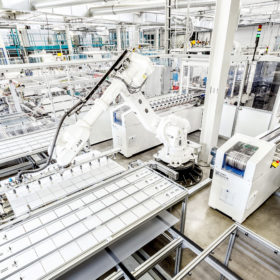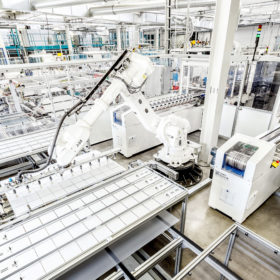teamtechnik receives stringer order for 400 MW German fab

German equipment manufacturer teamtechnik announced it has received an order from a European module manufacturer for several stringers to process nine busbar half cells. Already a major trend among module makers in China, 9BB technology now looks to be headed further afield.
Teamtechnik has received an order for several units of its TT2100 stringer from Germany based manufacturer SolarWelt. The tools are set to be delivered in time for Solarwelt to begin production in the first quarter of 2021.
A new entrant to the module market, Solarwelt is working closely with fellow German producer Heckert Solar. The company expects to have around 400 MW of module production up and running next year, focusing on 166mm monocrystalline cells in a half cell format.
“We are familiar with teamtechnik production systems at Heckert Solar and we know that they will enable us even to exceed our own high-quality standards,” says Solarwelt project Manager Danny Bönisch. “The laying precision of the ribbon handling, the exact positioning of the cell on the transport system, and the patented hold-down technology of teamtechnik stringers ensure that this requirement for precision is reliably met.”
For this order, teamtechnik has redesigned its well-known TT2100 platform to be able to process nine busbar cells, rather than five and six busbar cell concepts it is more familiar with. Speaking recently with pv magazine, teamtechnik’s senior account manager Michael Essich noted that while his company still believes five/six busbar interconnection is the most cost effective option, tier-1 cell manufacturers in China have quickly shifted to producing nine busbar cells, requiring module makers and module equipment suppliers to adapt.
Get the pv magazine global print edition
The June edition of pv magazine takes an in depth look at the growth of nine busbar cell technology and reports of difficulties in processing the round wires it relies on. Click here to subscribe
Many module manufacturers in Asia have also traded the flat ribbons used in five busbar interconnection for round wires, seeing the potential for higher power ratings with this. The tools supplied to SolarWelt, however, will utilize nine flat ribbons. Citing difficulties in handling the round wires during the stringing process, teamtechnik said it plans to continue working with flat ribbons, and sees plenty of potential for module output boosting improvements with these.


